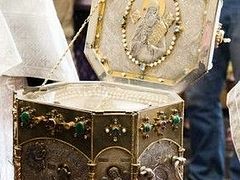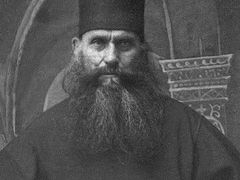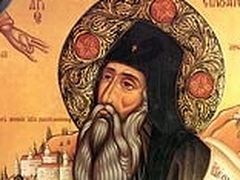Holy Mount Athos, August 26, 2016
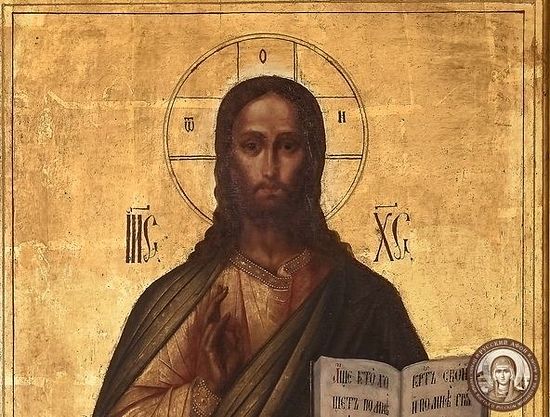
Together with the head of St. Silouan the Athonite, another great relic of the Orthodox world will be brought from Mt. Athos to the faithful of Belarus and Russia for the first time: the miracle-working icon of Christ the Savior associated with the miracle of the apparition of our Lord to to Venerable Silouan, reports the Afonit.info website.
For many years the wonderworking icon, before which St. Silouan the Athonite was praying when the Lord Jesus Christ Himself appeared to him, was kept at the Russian St. Panteleimon’s Monastery on Holy Mount Athos permanently and never left it.
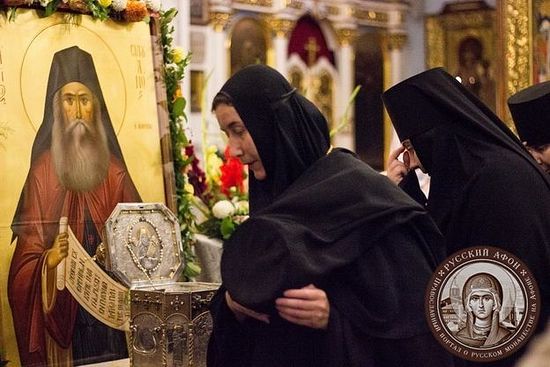
The visit of this icon (which is particularly venerated by Russian monks on Mt. Athos) to cities of Belarus and Russia is timed to coincide with the celebration of the 1000th anniversary of Russian monasticism on Holy Mount Athos. The miracle-working icon of the Savior is being accompanied by monks of the Russian St. Panteleimon’s Monastery who have brought the venerable head of St. Silouan from Mt. Athos. Thus, along with the relics of the holy elder Silouan, the Orthodox faithful of Belarus and Russia have an opportunity to venerate the miracle-working icon of our Lord Jesus Christ as well.
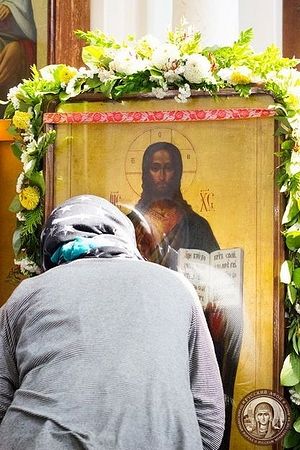
As is generally known, a miraculous event happened to young St. Silouan soon after the beginning of his monastic life at St. Panteleimon’s on Mt. Athos which changed his entire life. One day during his private prayer in the Church of the Holy Prophet Elijah adjoining the monastery mill, the image of Christ on the iconostasis suddenly “became alive”. St. Silouan saw the Lord Who was looking at him on the site of the icon.
It was not a mere visual observation, but a miraculous theophany in which the Lord, the Triune Godhead, became known in a mysterious way. According to the venerable father himself, during the apparition his soul was filled with the grace of the Holy Spirit and through the Holy Spirit not only did he behold the Lord Jesus Christ, but also recognized in Him his God, Savior and Creator, Who came by the good will of God the Father. The main point of the miracle was first of all not in the vision, but in the knowledge of God. Thus, this young and still inexperienced novice Simeon (the secular name of St. Silouan) had his first experience of the mysterious communion with God through His grace. Not only did he “see” the Lord with his physical eyes, but, above all, through the grace of God and the revelation of the Holy Spirit he came to know that it was the true Lord and Savior Who had appeared unto him.
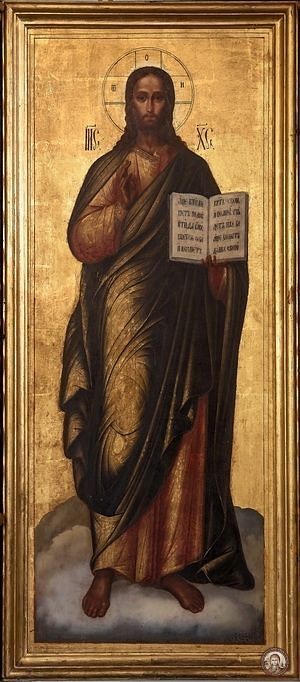
After that, the grace elevated St. Silouan’s mind to Paradise, as earlier had been the case with the Apostle Paul and Blessed Andrew the Fool-for-Christ. His soul was “wounded” by divine love forever so that he could not look at vain things any more until his death, being fully concentrated in the memory of God Whom he had seen face to face.
His love for God in response, his memory of being in Paradise in mind, and his inability to return to the blessed state of communion with God solely through his own efforts caused his pious “sorrow for God”. “My soul is missing God and is seeking Him with tears:” this is the keynote of all the writings of Venerable Silouan. “God the all-merciful, I cannot help but seek You, for my soul has known Your love”. He perceived the sorrow of Adam who was expelled from the Garden of Eden as his own sorrow and experienced it personally. The weeping Adam in his writings is his own soul which remembers its sojourn in Paradise and the blissful communion with God in prayer. Being unable to return that blessed state on his own, the saint, like Adam, descended in mind to hell in order to wait for the coming of the Savior there in humility, that the Lord would resurrect his soul again for eternal life together.
That theophany, that apparition of the Lord before His icon in the church adjoining the mill, left such an indelible mark on the saint’s soul that the memory of this event runs through the writings of Venerable Silouan.
The icon of the Savior, with which the miraculous event described above is associated, is kept on the iconostasis of the St. Elias Church (where the miracle occurred) of the Russian monastery on Mt. Athos to this day. It is one of the most venerated relics of the monastery.
For the first time this icon has left Holy Mount Athos and, together with the relics of St. Silouan the Athonite, has been delivered to Belarus in connection with the 1000th anniversary of Russian monastic presence on Mt. Athos, and then will be brought to dioceses of the Russian Orthodox Church in Russia which is a living testimony to the genuine life in Christ.

